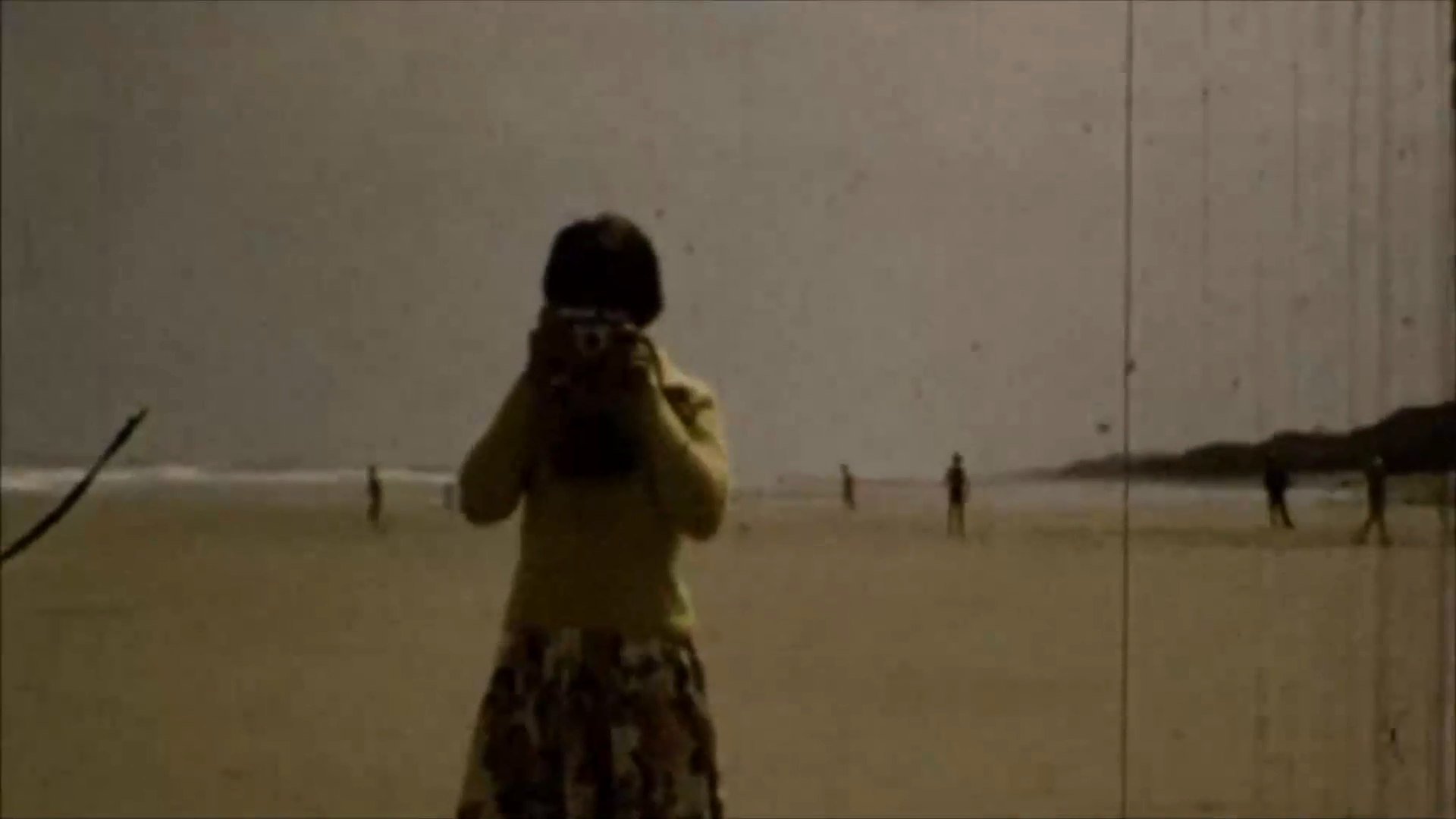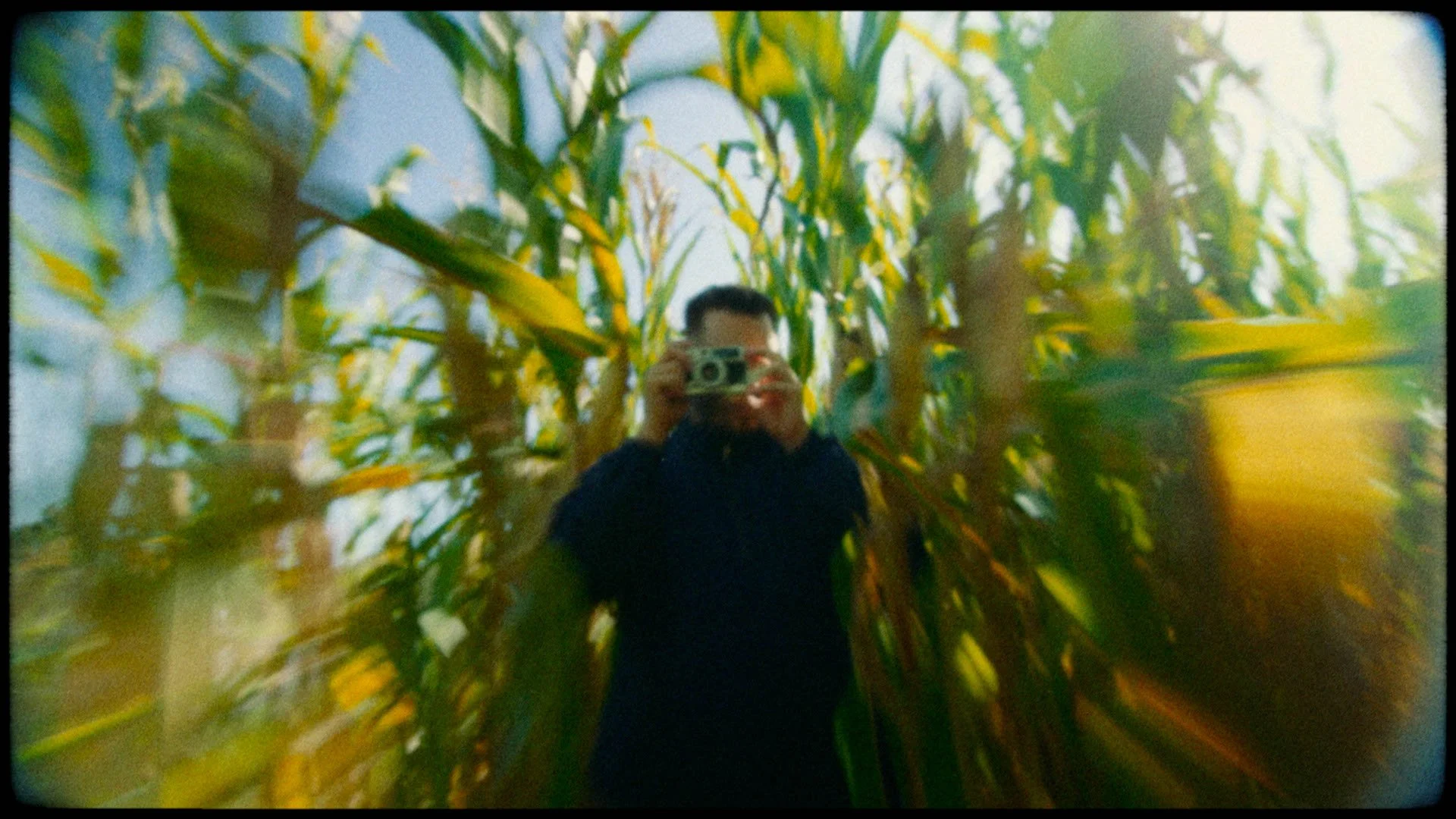Aldbrough
Directed by GAIL SMITH
Australia, 2020
Documentary, Experimental
Found archival footage reinforces the need for climate action to preserve historic communities.
Read our interview with Gail below to learn more about the film.
GAIL SMITH
Est. Reading Time: 9 Minutes
MARK (M) Tell us a little about yourself - when did you become interested in film and filmmaking?
GAIL (G) It’s been a gradual process that has come about organically as I was studying Fine Arts at university and trying different mediums. My father had a small 8mm movie camera which he used to document our family doing everyday things i.e. going on holidays, celebrating Christmas, birthday parties, sports days and house renovations. He later had the films digitized and gave copies to my sister and I.
Film has been a constant companion throughout my practice and I’ve worked with it in different ways such as using it as a running silent commentary to installations and enlarging single frames into large-scale darkroom prints. I have also been collecting and using old photos from eBay for a few years within my practice so exploring how I could use other people’s home movies where I didn’t know them or their story seemed like a natural progression. I started buying anonymous 8mm film which is how Aldbrough came about.
I wouldn’t say I’m a ‘filmmaker’ in the strictest sense of the word - I don’t know my way around a film set but I do know how to use the skills I have to get the look and feel I want on screen.
On Her Practice
M Please tell us about your fundamental interest in working with analog - why are you particularly inspired to explore the aesthetic and emotive components of analog film?
G I was majoring in photography at university but I quickly became disillusioned with making new images and was never really happy with what I produced. I was impatient with the finicky, technical side of it - equipment, studio set-up and so on. I realised I was far more interested in other people’s photos, particularly old ones that I could find in junk shops or online. And if the photos had imperfections like a wonky horizon, a finger in the frame or blur - the more, the better. I was also acutely aware of the sheer number of images that were (and are) being constantly produced, and I didn’t want to be a part of that consumption. Buying old photos was a way of reusing existing images. I loved being in the darkroom and reworking the old photos into very large prints which had the imperfections of the original image overlaid on beautiful silver gelatin paper.
Analog by its very nature forces you to slow down. I like that nothing can be rushed. Aesthetically it ticks all of my boxes. Physically, it could be tough going, wrestling with heavy rolls of paper that had a mind of their own and would wrap around your legs in the dark. Then having to drag the roll up a stepladder to pin the paper on the wall so that the image could be projected onto it. Processing it in massive troughs, the whole set of prints getting heavier as they got wetter…it was exhausting but extremely satisfying. I always felt I done a proper day’s work even if every image had gone wrong.
G For Aldbrough I initially tried working with the footage in various ways. I extracted single frames to make darkroom prints and worked through several iterations of adding sounds but I think I was in danger of making it too complicated. This coincided with a bit of a crossroads in my practice when I began to question nostalgia and how it can be easily overused to provoke a ‘traditional’ response such as a longing for times past. I was looking for a more critical, conceptual approach and I struggled with it for a long time. I didn’t want to stop working with orphan, discarded material because it is fundamental to my practice. New images don’t have the same attraction for me. It is the search, the find, the re-use of old ephemera that thrills me. So I left the film alone for a while and worked on different projects. When I came back, it was with fresh eyes and a promise to keep things simple.
G Adding sound gave the viewer a taste of the times - those childhood, carefree mid-60s summer days on a breezy Yorkshire beach where people are having a great day after a week of hard manual work in a factory or on the docks, and where your transistor radio plays pirate radio broadcasting from their ships moored off the coast. But I also wanted the film to have a tension, a potential unraveling of time and narrative to work against the scenario as it played out. The planes flying over and dropping their payload was the perfect foil and gave it the edge I needed to disrupt the storyline, and the few frames of a dead insect on the actual film added a bit of surrealism.
On Memory
M How did the footage influence and spark your childhood memories and recollections - did it reinforce or reshape your memory of Aldbrough in any way?
G When I finally saw the film after it had been digitized I couldn’t believe that it actually was the Aldbrough from my childhood and though the people in it were strangers to me, they also felt very familiar. It may have been an anonymous film but in a sense these were people I ‘knew’ - even the little girls in the scene where they are sitting on the doorstep resembled my sister and I. It had the unmistakable look of our working-class summer holiday, circa early to mid-60s, when family would have visited us too, walking past the same beach shacks, climbing down the cliffs, dipping our toes in the always-freezing North Sea, getting and finding sand in everything.
G I remember it most as the place my friends and I would cycle to and visit for a day out from the city. We always used to think how great it would be to have one of the shacks and live at the beach all the time. We would set off with the usual parental warning of not going near the cliffs which of course we always ignored. We would lie on our stomachs (as this would put us at less risk of a landslip injury) and look at the remains of houses below. It was little things like remnants of torn curtains stuck between rocks or smashed pots and pans that would get to me.
G The film was immediately melancholic because I knew that I was looking at loss. I’m watching footage of really happy and excited people with the benefit of hindsight, knowing that it’s all gone. I assume some would have died but it was the knowledge of the loss of the little clifftop group - people, houses and all that made the whole film one big Barthes’ punctum for me. Everything about it was piercing.
Up until 1964, my family lived in a street where a wartime bomb hit the house opposite to ours. No-one came to clear the damage so for us kids, it was our playground. From our front window, we could see inside it - bones laid bare, torn wallpaper, bits of wiring hanging out, marks where pictures had been hung. It’s this unique sense of life lost, not in a ‘death by bombing’ or ‘death by landslip’ way but the demise of an existence, which always had a human and material element for me and has manifested in my work.
‘Analog by its very nature forces you to slow down. I like that nothing can be rushed…I always felt I done a proper day’s work even if every image had gone wrong’
— Gail Smith
On Inspiration
M What are some of the films and who are some of the filmmakers that inspire you, and why?
G I never encountered experimental film until I studied at university. I liked the way the films didn’t have to be perfectly shot, composed or produced. I particularly liked the work of feminist filmmakers from the 1960s and 1970s like Marjorie Keller and Peggy Ahwesh who incorporated the material components of the film such as scratches and destruction. Bill Morrison is another contemporary favourite who works in much the same way using old film stock. Christian Marclay is always joyful to experience and his use of vinyl records and old film ticks all of my boxes.
When it comes to reworking nostalgia, two British artists also stand out - Mark Leckey and Vicki Bennett a.k.a People Like Us. Leckey says he wallows in the ‘mire of nostalgia’ and his film Fiorucci Made Me Hardcore (1999) is one of my all-time favourites. Dream Kid 1964-1999 AD (2015) also uses archival material from television commercials and music to relive Leckey’s childhood. Bennett has an incredible body of work through her collages of sound and vision, most of which is sourced from the internet. Behind painstaking research and editing is her fundamental questioning of ownership and copyright.
Dream Kid 1964-1999 AD (2015) by Mark Leckey
Fiorucci Made Me Hardcore (1999) by Mark Leckey
On The Future
M What are you planning to make next?
G My current film project is in the very early stages but it will again use footage from our family’s home movie. My grandfather was killed fighting against General Franco as a volunteer in the International Brigades in the Spanish Civil War. Part of the film was shot on our holiday in Spain in 1967 when Franco was still in power. Later in life my father found it difficult to fathom how we could have taken the trip knowing that the regime was responsible for his father’s death. The work’s overarching theme is loss but it will also explore the lies we tell ourselves and how actions ripple out to subsequent generations.
Mark’s Final Thoughts
I think Aldbrough brings together so many elements of Gail as a person and artist. Part of her attraction to collecting and reusing photos comes from genuine environmental concerns, and to essentially stumble upon raw footage of a place that simultaneously connects to her childhood and reflects her creative and environmental interests is quite remarkable.
Interesting to read about Gail’s interest in working with analog film. The physicality and tangibility of film plays a crucial role in her creative process because it ultimately helps Gail feel more connected to her work. This is important to note because you’re more likely to produce your best work when you’re emotionally engaged and connected to it.
I didn’t know much about Mark Leckey so it was great to learn more about his work. Click here to see Fiorucci Made Me Hardcore and click here to see Dream Kid 1964-1999 AD. I’m also really excited to catch up with the films of Marjorie Keller and Peggy Ahwesh.
Tags Analog Documentary Experimental Landscape Live-action Narration
Want to Learn More? Click here for Gail’s thoughts about the importance of nostalgia in highlighting current climate change issues.
The founder of Hommage, Mark Shaba published this interview on 07.07.2022. Mark is a filmmaker from Victoria, Australia. He respectfully acknowledges the past and present traditional owners of the land on which he creates, promotes and screens art, the Wurundjeri people of the Kulin nation who are the custodians.






















